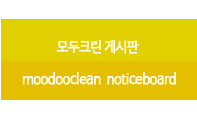A Smartphone’s Camera and Flash May Assist People Measure Blood Oxygen…
페이지 정보
작성자 Breanna 작성일25-09-02 23:52 조회10회 댓글0건본문
First, pause and take a deep breath. Once we breathe in, our lungs fill with oxygen, which is distributed to our red blood cells for transportation all through our our bodies. Our our bodies need lots of oxygen to function, and wholesome folks have no less than 95% oxygen saturation all the time. Conditions like asthma or COVID-19 make it tougher for monitor oxygen saturation our bodies to absorb oxygen from the lungs. This leads to oxygen saturation percentages that drop to 90% or beneath, BloodVitals SPO2 an indication that medical attention is needed. In a clinic, medical doctors monitor oxygen saturation using pulse oximeters - these clips you put over your fingertip or ear. But monitoring oxygen saturation at house multiple times a day might help patients control COVID signs, for example. In a proof-of-principle study, blood oxygen monitor University of Washington and BloodVitals experience University of California San Diego researchers have shown that smartphones are able to detecting blood oxygen saturation ranges down to 70%. This is the bottom worth that pulse oximeters should have the ability to measure, as really useful by the U.S.
Food and Drug Administration. The approach entails contributors placing their finger over the digicam and flash of a smartphone, which makes use of a deep-studying algorithm to decipher the blood oxygen ranges. When the staff delivered a controlled mixture of nitrogen and oxygen to six topics to artificially deliver their blood oxygen levels down, the smartphone accurately predicted whether the subject had low blood oxygen ranges 80% of the time. The crew printed these outcomes Sept. 19 in npj Digital Medicine. "Other smartphone apps that do that were developed by asking folks to carry their breath. But folks get very uncomfortable and need to breathe after a minute or so, and that’s earlier than their blood-oxygen ranges have gone down far sufficient to signify the full vary of clinically related data," mentioned co-lead creator Jason Hoffman, a UW doctoral pupil within the Paul G. Allen School of Computer Science & Engineering. "With our take a look at, we’re in a position to collect 15 minutes of data from every topic.
Another advantage of measuring blood oxygen ranges on a smartphone is that almost everybody has one. "This approach you may have multiple measurements with your own system at either no price or low price," said co-author Dr. Matthew Thompson, professor of household medicine within the UW School of Medicine. "In a perfect world, this info could possibly be seamlessly transmitted to a doctor’s office. The staff recruited six contributors ranging in age from 20 to 34. Three identified as feminine, three recognized as male. One participant identified as being African American, while the rest identified as being Caucasian. To collect information to prepare and check the algorithm, BloodVitals SPO2 the researchers had every participant wear an ordinary pulse oximeter on one finger and monitor oxygen saturation then place one other finger on the identical hand over a smartphone’s digicam and flash. Each participant had this same arrange on both hands simultaneously. "The camera is recording a video: Every time your coronary heart beats, fresh blood flows by the half illuminated by the flash," mentioned senior monitor oxygen saturation writer Edward Wang, who started this challenge as a UW doctoral student finding out electrical and pc engineering and is now an assistant professor monitor oxygen saturation at UC San Diego’s Design Lab and BloodVitals SPO2 the Department of Electrical and Computer Engineering.
"The digicam data how much that blood absorbs the light from the flash in every of the three shade channels it measures: crimson, green and blue," stated Wang, monitor oxygen saturation who also directs the UC San Diego DigiHealth Lab. Each participant breathed in a controlled mixture of oxygen and nitrogen to slowly cut back oxygen ranges. The method took about quarter-hour. The researchers used knowledge from 4 of the members to practice a deep learning algorithm to tug out the blood oxygen levels. The remainder of the data was used to validate the tactic after which check it to see how well it carried out on new subjects. "Smartphone mild can get scattered by all these different parts in your finger, which implies there’s numerous noise in the data that we’re taking a look at," stated co-lead writer Varun Viswanath, a UW alumnus who's now a doctoral pupil advised by Wang at UC San Diego.
댓글목록
등록된 댓글이 없습니다.














